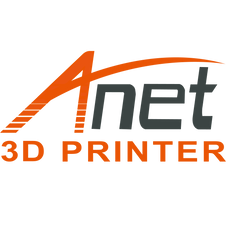Finishing 3D Prints: How to Sand, Fill and Prime 3D Printed Parts
incredible 3D printed red hood helmet ready for paint.
is going lines. It's just nature of the beast. It's how the FDM technology works.
Sanding
going to need to do is to sand it. into a dust. It's very important to wearing a mask to avoid breathing it in.
120 Grit Sandpaper
at a rougher sandpaper and then work your way up. it's how you do most sanding. I usually start at a 120. down the the layer lines and really starting to rough that up. You can wrapped the sandpaper t helps to have a better hold of it. lines.

into the cracks and crevices. those little spaces.
220 Grit Sandpaper
Use 220 grit sand paper to sanding the whole helmet all over again. whole helmet or the whole prop in one grit and then over and over again the same thing.

320 Grit Sandpaper
sandpaper, you're going to do the entire thing.
Fillable Sandable Primer
still some layer lines you can barely feel them with your nail, but they're there. So we're going to use some fillable sandable primer for that. Key thing is wash the print before you use this primer.

I like to put it in a bath of hot water for a little while. This stuff is thick that's why it's sandable and fillable and this way it breaks it up and makes for a great mix and it'll coat it really well.

tand off as the directions say 8 to 10
so you're not getting any runs. and just couple coats. let it dry. maybe even get another coat to fill in all those layer lines.

primer is magic.
this sandable fillable primer so it is smooth.
this thing a wash. I wash the print multiple times during the process to get a lot of that grit off.
If you look at this thing you can see here almost no lines now in this helmet. It's gonna have a little bit of grit. But those major lines are gone now.
Filling for Cracks and Layer Lines
thicker layer lines in the top of the helmet. We're going to use our glazing spot putty and a piece of foam. The foam could help to get into the cracks and crevices.

there to fill those lines to make sure that when you sand this you don't see them. Ywant to use it when you're taking care of these really thick lines and some of the minor lines throughout the helmet. While, if you really want to get that smooth smooth surface you might go through the whole helmet.

to do some filling. There are some tiny cracks or some layer lines that you couldn't get rid of. This bondo glazing putty is a really good material to use. Ireally well. You can also use wood putty. After i use the glazing putty i'll
going to go ahead and sand. Tdust. Make sure you're wearing a mask. If you can be doing outside even better.
another coat of the sandable fillable primer. Because you want to make sure you have that on there before you do your final
Little Tiny Files
are getting gummed up with all this primer.
to use some of these rasps some of these little tiny files.
the crack there into the detail to get rid of that and sand it smooth again.
400 / 600 Grit Wet Sanding
Use a 400 grit then 600 grit going over all the details and this takes care of all the sanding lines. Then go ahead and wet it again and wash it down and use Takes care of any sanding lines and makes this thing glass smooth.
to wash the helmet to get all this grime off with soap and water and let it air dry. In this way it will be totally ready for paint.

Leave a comment